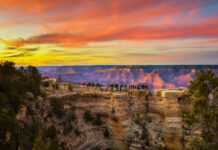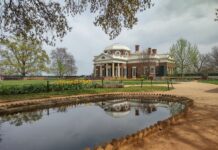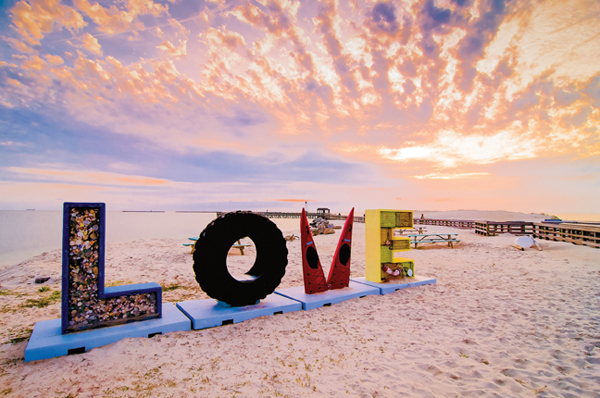
Saturday night, and the restaurant is so jumping it’s all my wife, Jill, and I can do to snag the last two seats at the bar. Next challenge: which of the three stellar dishes set before us to dive into first. There’s a bowl of steamed clams, tender and sweet; a heaping salad offering the tang and texture of arugula, orange segments and avocado; and, finally, perfectly seared slabs of ginger-dusted yellowtail over udon noodles in a shiitake-miso broth with flavor as deep and complex as a Russian novel. Oh, and I’ve got a pint of craft beer at my elbow and the O’s are knocking long balls on an overhead TV.
Which new Baltimore bistro is this, you ask? Actually, we’re in a bayside eatery called The Shanty in Cape Charles, a railroad town being reborn as tourist destination over in Delmarva’s least trampled corner— the “Va.” part. (Being less than an hour north of Norfolk, home of the Orioles’ minor league-affiliated Tides, might explain the Birds broadcast). While Del. has Rehoboth and Md. has Ocean City, Va.’s Eastern Shore has no ocean resorts at all (unless you’re willing to count Chincoteague). The wave-battered barrier islands here, once home to fishing villages and, as recently as the 1980s, housing developers’ dreams, are now uninhabited.
This pair of slender Virginian counties—Accomack and Northampton—dangling beneath Md. and orphaned from the rest of their state, have fewer residents than Towson. But what it lacks in boardwalks, the rural locale makes up for with amazing historical sights, a growing artisan community, outdoor adventures a go-go (kayak trip to a winery anyone?) and, as we learned at The Shanty, and throughout our recent weekend visit, utterly incredible food.
You’d probably never anticipate this when you first cross the state line from Md. Almost invariably this will be on Route 13, the peninsula’s blacktop backbone that turns into the Chesapeake Bay Bridge-Tunnel at its southern end. This ugly highway is lined with roadside gimcrack: cigarette outlets, derelict gas stations, chicken processing plants, even a Stuckey’s (a chain I assumed went the way of dial phones and the Ford Pinto). These back roads are where you encounter places whose names harken back to an older, simpler America—Greenbackville, Modest Town, Temperanceville—or reach back earlier still, to the native peoples who dwelled here for millennia—Pungoteague, Machipongo, Nassawadox. (Don’t take my word for it. Off 13 is the name of a highly recommended travel guide to these parts by native son Kirk Mariner.)
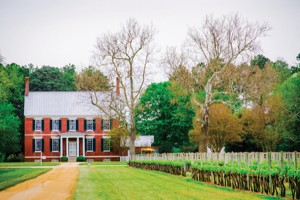 We cross the border on a Friday afternoon, slip off 13, and head for Onancock, a tourist-friendly town chartered in 1680. This really is an ancient part of the country: The English first explored these shores in 1606, and three 17th-century houses still stand here. The region even has an indigenous architectural style called “big house, little house, colonnade, kitchen,” which describes a house’s conjoined growth. But make no mistake: You will also see a lot of rusty mobile homes as well. While I rhapsodize over the region’s rustic charms and serene underdevelopment, these attributes come with economic challenges. These are among Virginia’s poorest counties, and despite a lack of ocean resorts, tourism is increasingly being called upon as a source of income.
We cross the border on a Friday afternoon, slip off 13, and head for Onancock, a tourist-friendly town chartered in 1680. This really is an ancient part of the country: The English first explored these shores in 1606, and three 17th-century houses still stand here. The region even has an indigenous architectural style called “big house, little house, colonnade, kitchen,” which describes a house’s conjoined growth. But make no mistake: You will also see a lot of rusty mobile homes as well. While I rhapsodize over the region’s rustic charms and serene underdevelopment, these attributes come with economic challenges. These are among Virginia’s poorest counties, and despite a lack of ocean resorts, tourism is increasingly being called upon as a source of income.
Gary Cochran says as much as he checks us into Onancock’s eight-room Charlotte Hotel that he and namesake partner, Charlotte Heath, opened in 2003, along with an adjoining upscale restaurant. “Someone wrote awhile back that we were going to be the next St. Michaels, but I don’t think we’re there yet,” Cochran adds, referencing the tony town on Md.’s Eastern Shore.
But ancient Onancock is clearly reinventing itself. The town bijou, the Roseland, looks unchanged from the day it opened in 1951. But across the street is a trendy women’s wear outlet offering artisanal sweaters, and a staid former bank building is now a funky coffeehouse. Galleries and antiques shops are filling up the storefronts, and there’s even a vintage record store. Away from the trim downtown, you’ll find historic homes worth a browse (Mariner’s book provides a great walking tour), including the handsome Ker Place, a brick edifice dating to 1799 and now a museum.
Our early-evening ramblings lead us to an ancient graveyard beneath gnarled trees—could be Savannah save the lack of Spanish Moss. One flag-adorned headstone reads: Commodore Whaley U.S. Navy Rev War. Turns out he was a Marylander who launched a naval assault both ill-fated (he was among the many casualties) and ill-timed (the peace treaty ending the Revolutionary War had already been signed).
We end up at the waterfront and the historic Hopkins & Bros. store, a clapboard building dating to 1842. It’s now doing business as Mallards at the Wharf, an eatery and bar catering to a boaty set and home to “Johnny Mo the Singing Chef,” who’s at the mic when we arrive. He is several notches above your bog-standard, tavern troubadour (even turned in a nice Prince tribute). Mo is no slouch with the pots and pans either, judging by the tasty house-smoked rockfish paté with pickled vegetables plate we snack on.
When Mo takes a break, we head back downtown to a roped-off V.I.P area within a huge, throbbing nightclub. Not really—just keeping you on your toes. We actually opt for a quiet late dinner at the hotel where a highlight is the V.I.P.-worthy Oysters Moscow that have the raw bivalves splashed with vodka and dotted with sour cream and caviar.
Next morning, after the fine cooked-to-order breakfast that comes with the stay, we’re disappointed to learn the town’s weekly market doesn’t open for the season until the following Saturday. A sign at the empty gravel lot reads “farmers, watermen, artists, artisans.” But another place with such diversity is Virginia’s Eastern Shore Artisan Trail, a website/ map/brochure launched last fall to help tourists discover the shore’s many creative offerings. It lists over 40 artists and craftspeople you can visit, as well as several “agri-artisan” farms, such as the Beep Beep Sheep Dairy, where they make sheep’s milk ice cream, and the Perennial Roots Farm, where a young couple practices “bio-dynamic farming” (organic with an added spiritual element).
A quick call ahead to make sure the folks are around is all you need, and that’s how we end up motoring southward to meet artist Maurice Spector, whose work piqued the interest of my artist wife. The burly, ruddy-faced native of Bucks County, Pa., bought a defunct dairy farm backing up to Pungoteague Creek 20 years ago and reimagined it into an artistic oasis, with all the barns and outbuildings serving his creative purposes. Spector is accomplished in many media—wood and stone carving, painting, pen and ink—and has shown work in Manhattan, and been the subject of a book.
“We have a growing artists’ community down here because it’s a cheap place to live,” Spector says, adding that he’s bullish that the Artisan Trail will help raise awareness. His rangy farmhouse brims with his work, including curvilinear carvings of women that seem modern while also invoking Inuit art. Female figures and horses dominate his paintings and drawings. Competing for one’s attention in this creative compound are whalebones, fossils and Native American artifacts he’s found walking the woods or beach.
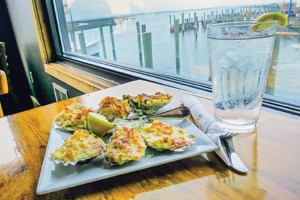 Rumbling bellies soon send us down the road to the Exmore Diner—a classic hunk of curvy chrome pulled down here from New Jersey in 1954. It seems all the peninsula’s population is wedged inside—young, old, black and white—tucking into classic diner fare sprinkled with fresh-caught shore treats. We manage to wrangle counter seats where I order a clam fritter (a tasty clam pancake of sorts), and Jill, an oyster sandwich (whose plump, crispy-soft contents are divine). Only later do we notice the specials board listing “Fresh Swelling Toads, $10.95.” (As opposed to stale, withering toads?) Our patient waitress explains that they are actually blowfish, a delicacy down this way. (Saveur magazine wrote about the “toads” and dubbed the region a “wonderland of culinary arcana.”)
Rumbling bellies soon send us down the road to the Exmore Diner—a classic hunk of curvy chrome pulled down here from New Jersey in 1954. It seems all the peninsula’s population is wedged inside—young, old, black and white—tucking into classic diner fare sprinkled with fresh-caught shore treats. We manage to wrangle counter seats where I order a clam fritter (a tasty clam pancake of sorts), and Jill, an oyster sandwich (whose plump, crispy-soft contents are divine). Only later do we notice the specials board listing “Fresh Swelling Toads, $10.95.” (As opposed to stale, withering toads?) Our patient waitress explains that they are actually blowfish, a delicacy down this way. (Saveur magazine wrote about the “toads” and dubbed the region a “wonderland of culinary arcana.”)
As it happens, by the 1980s, disease had nearly wiped out the shore’s trademark culinary offering—the oyster—and after lunch we head to Ballard Fish and Oyster in Cherrystone to learn how the industry rebounded. The answer is through shellfish farming, which Ballard helped pioneer back in 1983. Today’s sterile, disease-resistant farmed oysters can be enjoyed year-round. (Wild oysters spawn in the warm months, a process that renders their meat unfit for eating for awhile.)
Ballard welcomes tourist visits—I just shot them an email earlier in the week to set one up. Ned Harris takes us around the warren of gurgling PVC pipes and tanks that help churn out more than 100 million shellfish a year. He’s both a Ballard salesman and an oyster grower—one who “plants” their baby oysters in sections of the bay and oversees their growth until harvest. Breeding bivalves is not dissimilar to breeding thoroughbred horses or show dogs, as they seek out perfectly shaped wild “brood” oysters for spawning. I think Harris is only half-kidding when he describes how the spawning occurs in a “honeymoon suite with dim lights and music.” The tour’s best part? He snags an oyster out of a brimming box, deftly cracks it open and hands it over. It’s briny, with grassy and mineral-y overtones. Cocktail sauce would be a crime.
The sun greets us when we emerge from the bivalve complex and we race to Eyre Hall, an exquisite plantation home on a property that’s been in the same family since 1668. The oldest part of the gambrel-roofed colonial dates to 1758 and is rarely open to the public. The vast, formal gardens behind it can be freely explored, however. Ancient boxwoods and crape myrtles create green rooms, and the romantic ruins of a brick orangery and glimpses of Cherrystone Creek in the distance enhance the beauty.
We finally make it to Cape Charles in time to walk the town’s capacious white sand bay beach during a dramatic sunset. While Onancock dates to the Colonial Era, Cape Charles owes its existence to the railroad, which made its southern terminus at a wharf here in the 1880s. (People and goods would then continue on across the bay by steamer). The town fell into decline after trains stopped running and a car ferry departed in the 1950s. Its rebirth as a resort town is well over a decade old, however, and amenities include Jack Nicklaus and Arnold Palmer signature golf courses and a swanky gated community whose pastel color palette led local wags to dub it the “Jellybean Village.”
Our lodging at the Cape Charles Hotel swaps out the Charlotte’s homey aesthetic of wide-plank floors and distressed-wood armoires for sleek, Euro-smart modernity. Our room even boasts a private, glass-railed balcony overlooking town. From it, we can see The Shanty, a quick walk across the former rail yards where our tasty evening awaits.
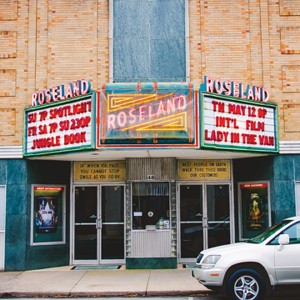 Sunday arrives with gray skies and that dank-air feeling of imminent rain. We’d hoped to explore the Savage Neck Dunes Natural Area Preserve, where a forest trail ends at undulating sand dunes along the bay. (I even brought a field guide and binoculars for some birding.) The skies are too threatening, so we drive the back roads up the Atlantic side of the peninsula, pausing at the tiny fishing village of Oyster. We poke around a deserted harbor stacked with crab cages while the Violet Jane II, a classic deadrise crabbing boat, bobs offshore. Gulls encircle thewaterfront and cars encircle the white- washed Methodist church nearby.
Sunday arrives with gray skies and that dank-air feeling of imminent rain. We’d hoped to explore the Savage Neck Dunes Natural Area Preserve, where a forest trail ends at undulating sand dunes along the bay. (I even brought a field guide and binoculars for some birding.) The skies are too threatening, so we drive the back roads up the Atlantic side of the peninsula, pausing at the tiny fishing village of Oyster. We poke around a deserted harbor stacked with crab cages while the Violet Jane II, a classic deadrise crabbing boat, bobs offshore. Gulls encircle thewaterfront and cars encircle the white- washed Methodist church nearby.
Continuing northward, there could be worse places to duck in out of the rain than a winery. Chatham Vineyards on Church Creek has been a farm for some 400 years and the brick home here dates to 1818, though the grapes are a more recent addition. (This is where you can also arrive by kayak and soothe sore muscles with some vino.) Their Chardonnay (oaked or steel fermented) is extremely popular—so much so they were sold out.
But the red Vintner’s Blend is tasty, too, and we use it to toast another fabulous weekend in the ESVA. For an area thought to be sleepy, with just a little effort, a host of quirky, cool activities can be found to tire you out.
Boardwalks are overrated.
From top: Chatham Farm was patented in 1640 and added a winery in 2005. Bakes Oysters Parramore unites the bivalve with lump crab. Onancocks’s throwback Roseland Theatre has an international film series.
This article originally appeared in the July issue of STYLE.


